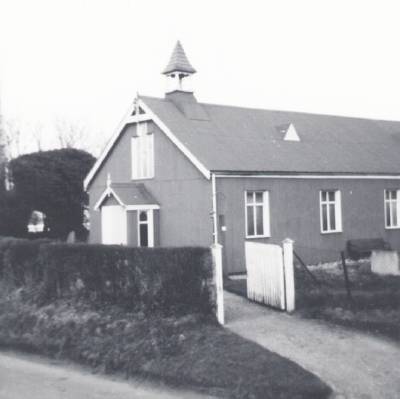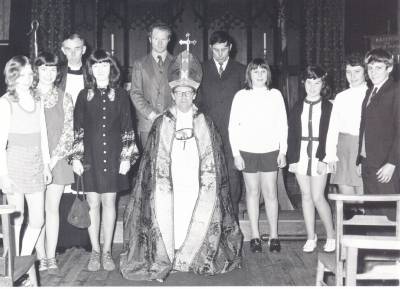![]()

![]()

St Mary's, Burgh Parva, North Norfolk
Perhaps only railway enthusiasts would know that one small village in Norfolk, owes its size and layout to the railway. It is Melton Constable, the centre at one time of the Midland & Great Northern Joint Railway, the M.& G.N. known affectionately as the Muddle and Get Nowhere. Melton was the junction for Cromer, Great Yarmouth, Norwich, King's Lynn, even for Little Walsingham.
In its heyday it had locomotive repair works, built locomotives, while its chief engineer, William Marriott developed reinforced concrete sleepers, posts and other items, obtaining patents for them and the machines that made them. The Cromer to Kings Cross express, complete with dining car made the journey with just one stop at Peterborough in those days.
It was the railway company that built the houses for its workers. Small terraced housing with larger corner houses for the foremen. North of the main road was private housing, again small terraced houses. With the increase in population came the school, the pub, the shops, the Post Office, the bank and the Railway Institute with its 3,000 books and facilities for billiards and other entertainment. There was even a gas works with its own gasholder.
Such days were numbered. The works closed in the 30's and the railway in 1964. The engineers and many other staff went either to Stratford or Doncaster with just a few keeping jobs nearer to home. Eventually the school closed, the bank closed and the Railway Institute became the Country Club. The decline was aggravated by the press headline,"The Ugliest Village in Norfolk". Imagine the reaction! Eventually the county helped tidy things up, the bridge over what had been the railway removed and the road improved. The works and yards became a small industrial estate, bringing much needed employment, and all this in the middle of the rural county of Norfolk.
The land on which the railway and its works had been built had been owned by Lord Hastings, whose family traced their ancestors back to the Norman Conquest. Close by Melton was the family seat, a mansion built by Sir Jacob Astley in 1688. He is famous for his prayer, made before a battle in the Civil War. "Lord, I shall be very busy this day, I may forget Thee, but do not Thou forget me." The house stands in 500 acres of parkland with its herds of red and fallow deer and a lake 1/4 mile long. In its day there was also a menagerie, a brick works, a saw mill and of course a church. St Peter's in the Park with its private pew overlooking the whole interior.
Part of the agreement with the railway company was that the Hastings had their own private waiting room, suitable for use when entertaining royalty. However the influx of so many newcomers all wanting to use what was virtually a private chapel for weddings, baptisms and funerals placed a strain on local relationships. It was resolved when Lord Hastings gave the land round the ancient ruined tower of Burgh Parva, so that a new church could be erected for the railway workers. Dissenters eventually had their own place of worship, The Railway Mission. So Melton Constable was divided into two parishes. Some 50 living in the old parish of St Peter's, and about 500 living in Burgh Parva parish. A new church came into existence. A typical industrial solution was found, a prefab, made of corrugated iron and erected on the new site, St. Mary's, Burgh Parva. It has been there for about 90 years and now and again it gets a coat of bituminous paint to smarten it up.

Confirmation by the Bishop of Lynn in St Mary's
That is one relic of former days, the church still has a lot of music showing that at one time it could boast a good choir. Looking round the area one sees old trucks used in the fields for cattle, a railway carriage converted into a bungalow, at one time the seating in the doctor's surgery came from railway carriages. Old sleepers always found a ready market and the ballast was good for car parks.
Despite its decline, former railway workers often moved back in retirement to the close community they had known. Engine drivers, carpenters, firemen, station masters all with tales of the good old days. The glory may have gone, but they made a return journey as they came to the end of the line.
The Ugliest Village? From some points of view, but with a fascinating history and a community like none other in the county.
Fr Arthur Green
![]() Return to the June 1999 Features page
Return to the June 1999 Features page
![]() return to Home page and main index
return to Home page and main index
page last updated 1 JUNE 1999